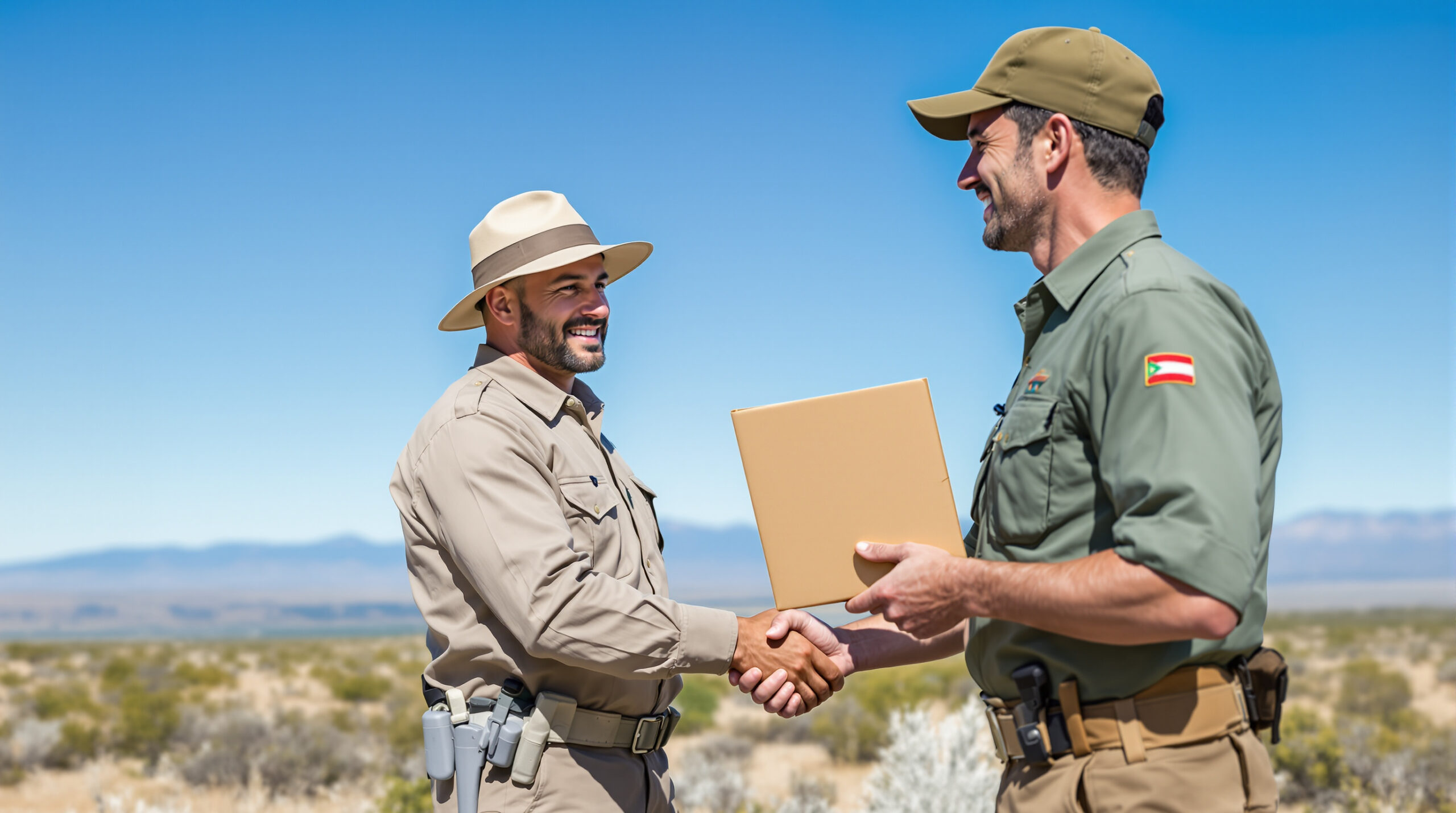At an August 19 ceremony in Salt Lake City, the Bureau of Land Management finalized the transfer of 618 acres to Utah State Parks, consolidating ownership at Antelope Island and Wasatch Mountain State Parks to improve visitor management, according to a Utah State Parks release.
During a signing ceremony at the BLM Utah State Office in Salt Lake City, agency leaders gathered to endorse the handoff.
Jerry Davis, BLM Utah acting state director, and Scott Strong, Utah State Parks director, signed the conveyance documents.
In a press release, West Desert District Manager Michael D. Gates emphasized the benefits of the transfer, stating, “This land transfer reflects our commitment to efficient land management. By consolidating land ownership, we’re creating a better experience for the public.”
The no-cost conveyance was authorized by the Utah State Parks Adjustment Act, or Public Law 118-181. An Interior statement explains the law directs the Department of the Interior to dispose of “small, isolated” BLM parcels that are hard to manage and instead place them under state control.
In a February 2024 press release introducing the legislation, Rep. Celeste Maloy said, “Utah State Parks are well-managed and cared for. I’m proud to sponsor this bill alongside Senator Lee which would remove ineffective bureaucratic management over these small parcels of land and return them to local control.”
The legislation originally cited about 510 acres for transfer, a figure that grew to 618 acres after supplemental survey work confirmed exact boundaries. The Interior Department deferred to USDA on parcels near Fremont Indian State Park.
For campground, RV park and glamping operators near Antelope Island and Wasatch Mountain, consolidated management may create opportunities for new marketing and service offerings that could benefit private parks. To capture a potential surge in visitation, operators might bundle state-park passes, shuttle tickets, and campsite nights in a single checkout to make planning easier for guests.
Synchronizing check-in and check-out windows with peak park entry times can help maximize guests’ recreation time within the parks. Offering gear rentals such as kayaks, e-bikes, and spotting scopes that match each park’s recreation style may appeal to visitors seeking new experiences.
Adopting dynamic pricing could encourage mid-week and shoulder-season stays, while establishing referral agreements with local outfitters and tour guides may help increase occupancy rates for both partners. Investing in a mobile-first booking engine can also attract on-the-road travelers who expect real-time availability near the park gate.
“Federal and state collaboration ensures our public lands are protected and the public is served,” Utah Division of State Parks Director Scott Strong said in a recent press release, noting the state will now manage the new acreage under its existing recreation and conservation guidelines.
Matching those guidelines can also strengthen a business’s position as a future concession partner. Installing low-flow fixtures and native landscaping helps mirror park water-conservation rules.
Using dark-sky compliant lighting preserves stargazing opportunities for guests and wildlife. Adding solar arrays or micro-grids to common areas can reduce a property’s carbon footprint, which may be attractive for potential state partnerships.
Providing EV-charging stations for the growing electric tow-vehicle segment supports an increasingly popular travel trend. Maintaining fire-wise vegetation buffers and clear evacuation routes helps meet updated wildfire-management expectations. Offering digital trail maps and QR-based interpretive signage can reduce paper waste and bring a property’s guidance system in line with the state’s move toward app-based visitor information.
Visitors could see changes such as smoother fee collection, more consistent signage and the potential for new trail links as the state integrates the 618 acres, though no specific implementation plans have been publicly announced. Interior officials signaled they are open to examining other isolated in-holdings for future transfers, giving nearby private parks more chances to align early with evolving management plans.
“Public lands are for everyone, and we invite everyone to make lifelong memories experiencing Utah’s incredible state parks. We will continue to ensure these lands are maintained for the enjoyment and preservation of this and future generations,” Strong said.


